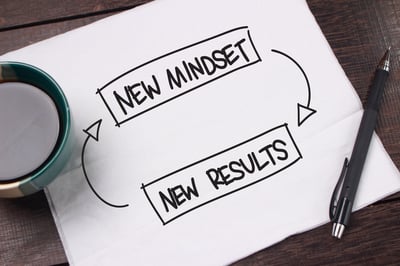 In some organizations, the leaders who are good at putting out fires are considered the best managers. But what if, instead of putting out fires, leaders had the luxury to spend time on fire prevention? What if, when the rare flame was spotted, every leader was skilled in identifying and correcting the root cause? These conditions are possible with an approach called Leader Standard Work.
In some organizations, the leaders who are good at putting out fires are considered the best managers. But what if, instead of putting out fires, leaders had the luxury to spend time on fire prevention? What if, when the rare flame was spotted, every leader was skilled in identifying and correcting the root cause? These conditions are possible with an approach called Leader Standard Work.
What is Leader Standard Work?
Leader Standard Work is a set of behaviors, actions, and tools that are incorporated into the daily work of leaders. Leader Standard Work, to varying degrees, applies to managers, supervisors, directors, and executives. Leader Standard Work encourages and promotes continuous improvement in organizations.
In general, Standard Work is the current set of best practices for any task or process. Leader Standard Work is the same idea. It is the proven set of best practices that help leaders start, spread, and sustain improvement.
The purpose of leader Standard Work is to reduce variation, improve performance, develop team members, demonstrate how to make smart changes, and support people. It defines what, when, and how the leader should take action.
Leader Standard Work actions include:
- Develop process standards alongside the process operators
- Observe processes in action (Gemba Walks)
- Ask process questions, including how, what, who, and why
- Identify gaps between standard & actual work
- Support process improvement
- Coach and develop staff
- Reflect on results, consider successes and failures
- Hold direct reports accountable
- Deploy the strategy

In his book “Creating a Lean Culture,” David Mann asserts that there are four essential elements of Lean culture:
1. Leader Standard Work
2. Visual control boards
3. Daily accountability process
4. Discipline
Leader Standard Work at Every Level
Of course, not all leadership activities can be standardized, primarily reactive or strategic tasks. In general, the higher up the org chart, the fewer opportunities for standardization of work practices. However, even at the highest level, there is always some degree of work that can be made standard.
One of the chief responsibilities of leaders is ensuring that process and procedure standards are in place and followed consistently at all levels of the organization. Standardization happens from the bottom up, starting with activities done at the operator level because this is the most direct line to value for the customer. Beyond that, standardization builds up to the executive level. Therefore, structured, standardized work makes up around 95% of work at an operator level. As you look up the ranks of leadership, less time is spent on standardized tasks. For example:
Team Leaders: Of course, it varies based on the type of organization, but generally, team leaders spend 80% of their time on standardized tasks. Typical tasks include verifying that operators follow their standard procedures, daily huddles, documentation, and coaching.
Middle Managers: Middle managers spend about 50% of their time on standardized tasks. Middle managers should engage in routine, structured activities that allow them to verify that team leaders and supervisors follow Standard Work. This may include Gemba Walks and frequent reviews. The focus is on team leaders and supervisors, but coaching at the operator level is still expected.
Director (or Site Leadership) Level: Even at the director level, 25% of time should be devoted to standardized tasks. The main goal of leader Standard Work at this level is to ensure that middle managers are following their Standard Work. Generally, this is accomplished through direct observation and reviewing standardized documentation. That said, coaching should still take palace at all levels.
Executive Level: It may be surprising, but at the executive level, 10% of time should still be devoted to Standard Work. Standard processes can cover strategy development, goal alignment, and reporting. Of course, executives must ensure that directors are adhering to Leader Standard Work.
Benefits of Leader Standard Work
Leader Standard Work drives daily improvement: Kaizen events or rapid improvement events are popular methods for identifying and implementing opportunities for improvement. Although they are instrumental, they become isolated occurrences in many cases, and employees don’t improve processes when an event is not scheduled. In an authentic culture of improvement, process improvement is a way of thinking for all employees, and positive change happens incrementally daily.
Leader Standard Work encourages a focus on processes, not people: When organizations blame people for problems rather than systems or processes, employees will be less likely to communicate issues and suggest improvements. Leader Standard Work abandons the old command-and-control management style in favor of one that seeks out problems in the process. Eliminating the blame game opens up communications and creates an environment more conducive to positive change.
Leader Standard Work promotes alignment and standardization: By defining a set of standard practices and routines, leaders can ensure that their actions are aligned with organizational goals, strategies, and values. This alignment creates a sense of unity and shared purpose, fostering collaboration, and facilitating the achievement of common objectives.
Leader Standard Work builds the organization’s problem-solving muscle: Many leaders think of themselves as problem-solvers. Leader Standard Work asks them to think of themselves as problem-solving trainers. Instead of jumping in with solutions, leaders coach team members to build the skills and subject matter knowledge to devise potential solutions independently. By doing so, leaders make the entire organization stronger, more resilient, and more innovative.



Add a Comment